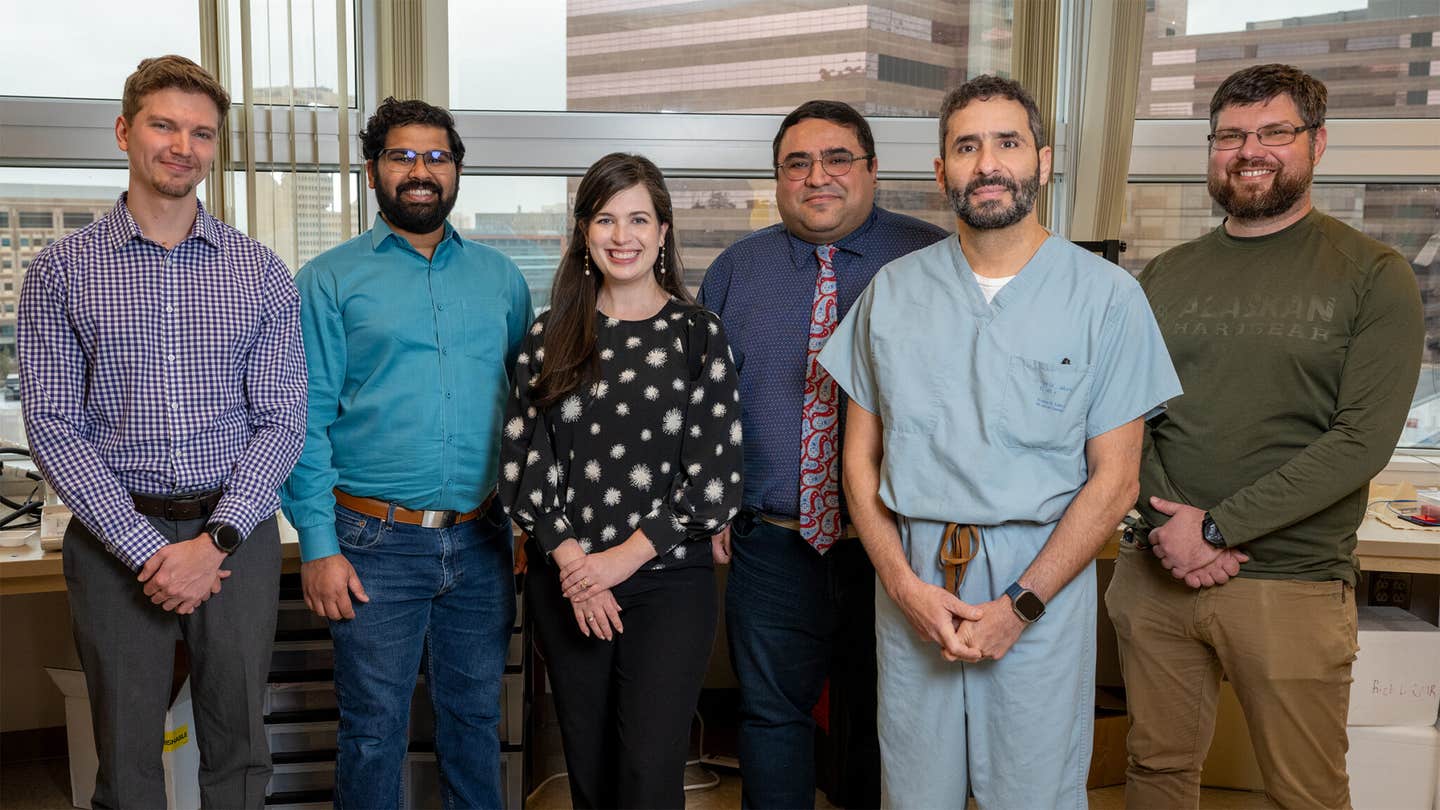Researchers develop novel, painless treatment for heart arrhythmia
Ventricular arrhythmia, an abnormality that occurs in the lower chambers of the heart, is a leading cause of sudden cardiac death in the US.

[Jan. 14, 2024: JD Shavit, The Brighter Side of News]
A breakthrough study led by Dr. Mehdi Razavi at The Texas Heart Institute (THI), in collaboration with a biomedical engineering team of The University of Texas at Austin (UT Austin) Cockrell School of Engineering led by Dr. Elizabeth Cosgriff-Hernandez, sets the foundation of a ground-breaking treatment regimen for treating ventricular arrhythmia. (CREDIT: The Texas Heart Institute)
In a groundbreaking collaborative effort, Dr. Mehdi Razavi of The Texas Heart Institute (THI) and Dr. Elizabeth Cosgriff-Hernandez of the University of Texas at Austin Cockrell School of Engineering have unveiled a groundbreaking treatment regimen for ventricular arrhythmia.
Published in Nature Communications, their study introduces a hydrogel-based pacing modality that holds the promise of transforming the way this life-threatening condition is managed.
Ventricular arrhythmia, a heart rhythm abnormality that occurs in the lower chambers of the heart or ventricles, is a leading cause of sudden cardiac death in the United States.
This condition, often referred to as re-entrant arrhythmia, occurs when abnormal electrical impulses perpetuate themselves in the heart, leading to erratic and potentially fatal heart rhythms.
Related Stories
Dr. Razavi, a practicing cardiologist and cardiac electrophysiologist, explained, "Re-entry occurs mainly from delayed conduction in scarred heart tissues, usually after coronary artery occlusion during a heart attack, which can be corrected by enabling pacing in these regions."
To tackle this issue, the researchers turned to hydrogels, which offer biostability, biocompatibility, tunable properties, and ease of incorporating electrical conductivity. These hydrogels can be delivered inside coronary veins, bypassing the risk of ischemia, and effectively pacing the inaccessible regions of the heart.
The innovative hydrogel technology was successfully deployed in a pig model through minimally invasive catheter delivery. Dr. Cosgriff-Hernandez noted, "The hydrogels have significant conductive properties that enable simultaneous pacing from multiple sites along the length of the hydrogel and create a conduction highway similar to those in Purkinje fibers."
Design of injectable hydrogel electrode. Redox initiation reaction of polyether urethane diacrylamide (PEUDAm) macromer + N-acryloyl glycinamide (NAGA) delivered using double barrel syringe with a mixing head. (CREDIT: Nature)
Currently, arrhythmia is treated with medications and procedures that control irregular rhythms. However, existing anti-arrhythmic drugs are not always effective and can exacerbate re-entry arrhythmia, posing additional risks due to their potential toxicity. Interventional ablation therapies, while commonly used, do not address the underlying mechanism of re-entry arrhythmia.
Cardiac defibrillators, implanted to manage arrhythmia, can be painful and severely impact a patient's quality of life when delivering electric shocks to restore heart rhythm. Left untreated, arrhythmia can lead to severe damage to vital organs or even cardiac arrest, a life-threatening condition where the heart suddenly stops beating.
In vivo assessment of injectable electrode in coronary vein of a porcine model. Postmortem confirmation of in situ cure of hydrogel in the anterior interventricular vein (AIV) (H1) and tributaries (H2). Coronary vein image from IMAIOS.com. (CREDIT: Nature)
Dr. Cosgriff-Hernandez emphasized the key advantage of their hydrogel approach, stating, "When injected into target vessels, the conductive hydrogel conforms to the patient’s vessel morphology. Adding a traditional pacemaker to this gel allows for pacing that resembles the native conduction in the heart – effectively mimicking the native electrical rhythm of the heart – and extinguishes the cause for arrhythmia, providing painless defibrillation."
This pioneering work demonstrates the ability to directly stimulate the native and scarred mid-myocardium through injectable hydrogel electrodes as a pacing modality.
Schematic of injectable hydrogel system to transform coronary veins into flexible electrodes that capture inaccessible cardiac tissue. (CREDIT: Nature)
With minimally invasive catheter delivery and standard pacemaker technologies, this study points to the feasibility of a novel pacing modality that resembles native conduction, potentially eliminating lethal re-entrant arrhythmia and providing painless defibrillation. This approach could revolutionize cardiac rhythm management, offering patients a better quality of life.
The significance of this scientific advance extends beyond the realm of cardiac care. Effective pain management is crucial for patients with heart, lung, and blood diseases, making the innovation in painless defibrillation and arrhythmia prevention a game-changer for overall patient wellness. Dr. Razavi, Dr. Cosgriff-Hernandez, and their teams have opened up new horizons in the field of cardiology, providing hope for those afflicted by ventricular arrhythmia and offering a potential paradigm shift in treatment strategies.
Note: Materials provided above by The Brighter Side of News. Content may be edited for style and length.
Like these kind of feel good stories? Get the Brighter Side of News' newsletter.
Joshua Shavit
Science & Technology Writer | AI and Robotics Reporter
Joshua Shavit is a Los Angeles-based science and technology writer with a passion for exploring the breakthroughs shaping the future. As a contributor to The Brighter Side of News, he focuses on positive and transformative advancements in AI, technology, physics, engineering, robotics and space science. Joshua is currently working towards a Bachelor of Science in Business Administration at the University of California, Berkeley. He combines his academic background with a talent for storytelling, making complex scientific discoveries engaging and accessible. His work highlights the innovators behind the ideas, bringing readers closer to the people driving progress.



